Underground Chicago
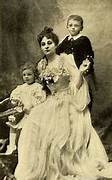
Albertine Huck Field with her sons, Henry and Marshall III.

By Megan McKinney
Even before the Great Fire of 1871 there was a separate Chicago beneath us. In the image above we see Albertine Huck Field, wife of Marshall Field II, with their sons, Henry, left, and Marshall III.

Albertine’s father, Louis C Huck , and her grandfather, John A. Huck, brewed beer at their company, which became L. C. Huck Malting Co. They then stashed the brew away in a cool Gold Coast underground space, possibly directly beneath where you are sitting to read this now.

John A. Huck, began brewing the first lager beer in Chicago at Rush Street and Chicago Avenue in the 1840’s. After a decade, he moved the operation to Banks and Astor on property bounded by State, Banks, Astor, and Goethe. In a great innovation, the brewery featured a network of subterranean vaults and tunnels—totaling as much as two full miles in length—for brewing the beer at low temperatures year-round.
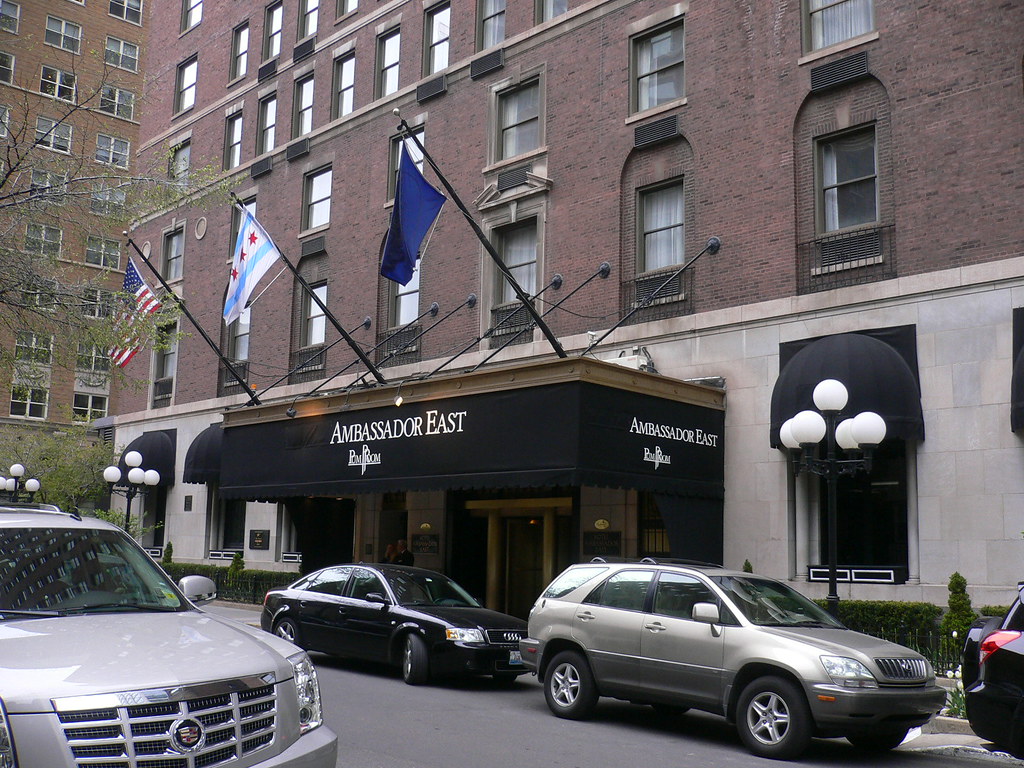
There have been stories through the years such as those of construction workers building the old Ambassador East Hotel in 1926 coming upon sudden unexpected holes that once led to the Huck tunnels . . .

And of neighborhood boys finding entrances to the tunnels while poking around near home.
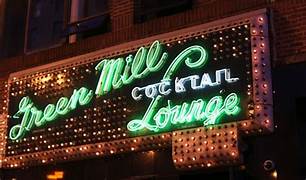
That explains the Gold Coast subterranean world. However, it was Prohibition that produced Uptown’s infamous network of underground tunnels. The Green Mill Cocktail Lounge , where we go today to hear great jazz was a notorious speakeasy during the 1920’s.
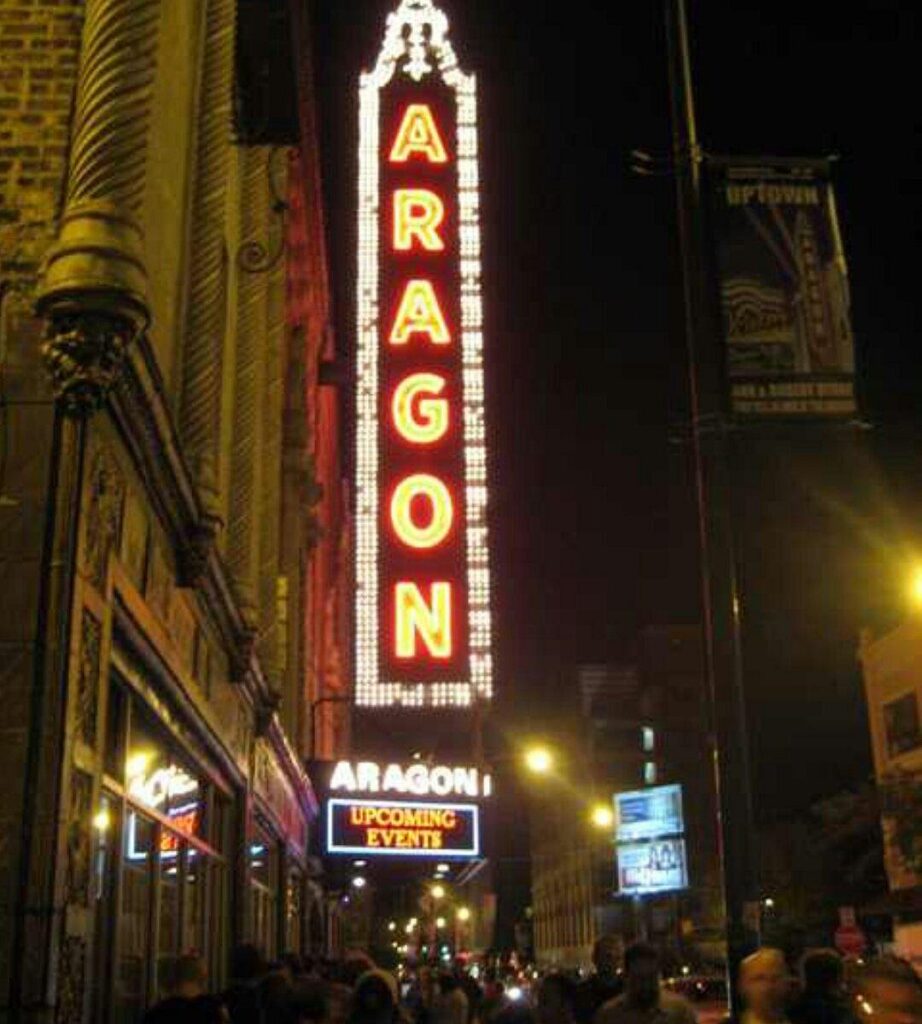
When the Green Mill was raided, customers would slip through a hidden exit near the bar to tunnels leading to public spaces where they could blend into an innocent existing crowd. Among these spots were the Aragon Ballroom . . .

And the Uptown Theatre.
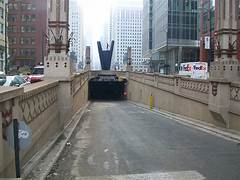
Downtown tunnels are disappointing. The LaSalle Street Tunnel entrance at Kinzie Street appears intriguing and once was, when it led to a passage under the Chicago River, but today it merely heads drivers toward a parking garage.
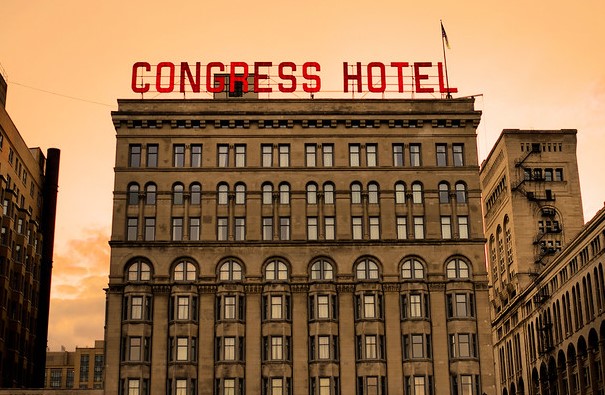
Think how glamorous a marble tunnel beneath what is now Ida B. Wells Drive would have been as it took audience members from the then elegant Congress Hotel to performances at the Auditorium Theatre. And it carried the fanciful name Peacock Alley.

Sorry. Today the elegant passage is simply a bricked up basement area.
But Wait. Here is something that looks good and that each of us can use whenever we are in the Loop: The Chicago Pedway.
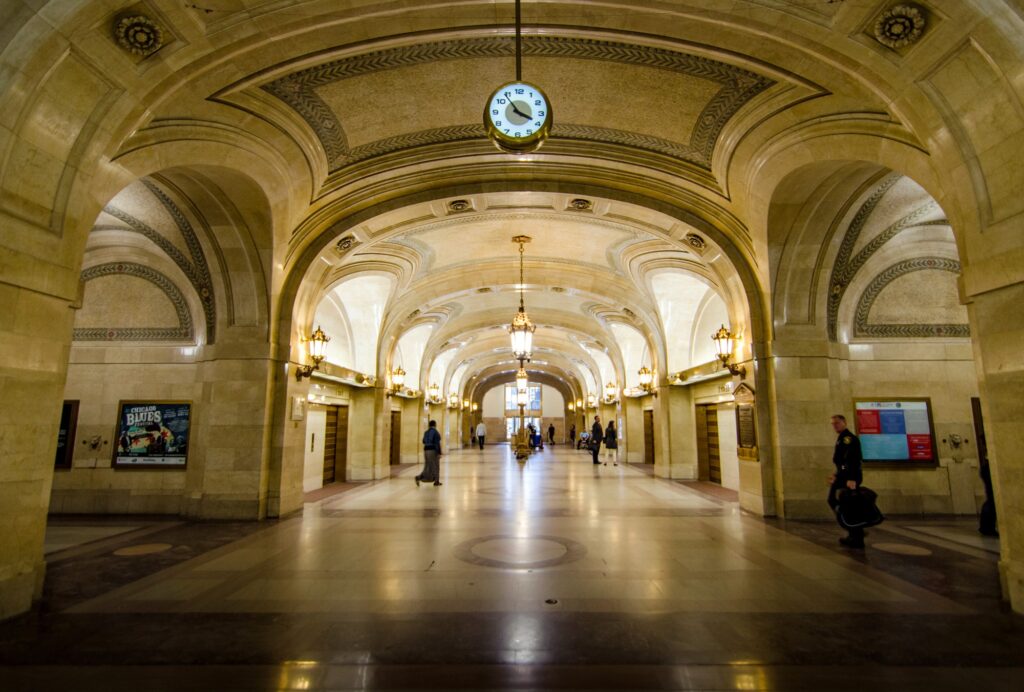
Officially, it is “a network of tunnels, ground-level concourses and bridges connecting skyscrapers, retail stores, hotels, and train stations throughout the central business district of Chicago” that is looking better every day with the arrival of winter. In the above photo, it is providing pedestrians a warm, dry ground-level route through City Hall.
Author Photo: Robert F. Carl






